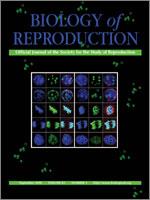During their transit along the epididymis, mammalian spermatozoa acquire new proteins that are necessary for their acquisition of forward motility and fertility. By using the bovine model, we previously showed that small membranous vesicles named epididymosomes are secreted in the epididymal intraluminal compartment. Epididymosomes from caput and cauda are different, and interact sequentially with the transiting spermatozoa. In fact, selected proteins of epididymosomes are transferred to different subcompartments of the maturing spermatozoa. In this study, we investigate the possibility that different subpopulations of epididymosomes are present in the caudal portion of the epididymis. Through the use of discontinuous sucrose gradient ultracentrifugation, we isolated two distinct populations that differ in their protein and lipid compositions. Although they have similar diameters, the ultrastructural appearance of these two populations was very different. The low-density (Ld) vesicles are enriched in cholesterol, sphingomyelin, and ganglioside M1, suggesting the existence of detergent-resistant membrane domains or rafts. The high-density (Hd) vesicles show a high protein concentration, including ACTB and VAMP8. When each subpopulation of biotinylated cauda epididymosomes was coincubated with caput spermatozoa, a subset of biotinylated proteins was transferred to the sperm; the Ld and Hd vesicles transferring the same pattern of proteins. In vitro competition assays of protein transferred from Ld or Hd epididymosomes to sperm confirm the similarity in the selected transferred proteins. Electrospray tandem mass spectrometry (ES-MS/MS) analysis of proteins associated with the two populations of vesicles confirm the epididymal origin of some of them, the possible involvement of others in transmembrane signaling systems, and the identification of proteins for which functions in sperm physiology remain to be determined. Mass spectrometry analysis also revealed that ELSPBP1 and GBB2 were transferred from epididymosomes to spermatozoa. Results are discussed with regard to the functions of these two cauda epididymosome populations in sperm physiology.
How to translate text using browser tools
10 June 2010
Characterization of Two Distinct Populations of Epididymosomes Collected in the Intraluminal Compartment of the Bovine Cauda Epididymis
Gilles Frenette,
Julie Girouard,
Olivier D'Amours,
Nancy Allard,
Laurence Tessier,
Robert Sullivan
ACCESS THE FULL ARTICLE

Biology of Reproduction
Vol. 83 • No. 3
September 2010
Vol. 83 • No. 3
September 2010
epididymis
epididymosome
gamete biology
male reproductive tract
sperm maturation




